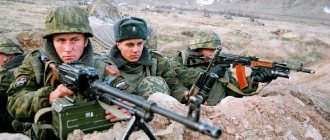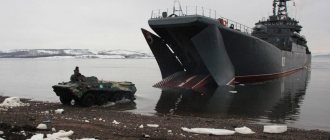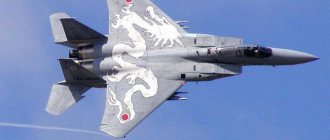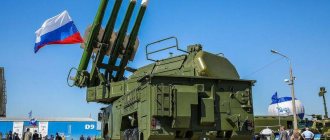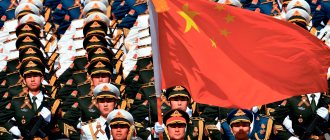An elite unit and a separate type of army units of the Russian Federation include airborne units. They are included in the reserve of the Commander-in-Chief of the state and report directly to the Airborne Forces Commander. The armament of the troops is very diverse, ranging from knives and pistols to self-propelled vehicles and aircraft. A variety of land, water or air transport is used for landing. Let's study in more detail the arsenal of these parts, their purpose and structure.
Purpose
Since October 2016, the leadership position of the unit in question has been occupied by Colonel General Serdyukov. The main purpose of the Airborne Forces is to respond behind enemy lines, carry out deep raids, capture valuable objects, disorient the enemy by carrying out sabotage and eliminating certain bridgeheads. Airborne troops are, first of all, an effective tool for conducting offensive military operations.
Only candidates who meet high selection criteria, including not only physical fitness, but also psychological stability, are included in these elite units. The armament of the Airborne Forces, as well as the creation of the structure itself, was developed back in the thirties of the last century. By the beginning of World War II, five corps had been deployed, each numbering about 10 thousand people. The official date of the creation of the airborne troops of the Russian Federation is considered to be May 12, 1992.
Physical training.
The airborne platoons were recruited from among the most physically developed candidates. Platoon commanders worked with the paratroopers according to their plans, supporting and developing the physical training of the cadets. It is no coincidence that among the paratroopers there were so many candidates for master of sports in various sports areas. In addition, a group was created at the school to study hand-to-hand combat under the leadership of Senior Lieutenant Gavrikov, the backbone of which was paratrooper cadets.
Historical moments
The first weapons of the Airborne Forces appeared with the creation of the corresponding military department in the USSR (1930). At first it was a small detachment, part of a regular motorized rifle division. It is worth noting that the first experience of landing a combat group by parachute was practiced a year earlier. Then, during the siege of the Tajik city of Garam, a detachment of Red Army soldiers landed by air and successfully relieved the settlement.
A couple of years later, a special special response brigade was formed. In 1938 it was renamed the 201st Airborne Detachment. The development of the Airborne Forces in the Soviet Union occurred quite rapidly and violently. The first parachute landing of the new organization was carried out in the Kiev Military District (1935). A year later, the event was repeated on an even larger scale at the training ground in Belarus. Invited observers, including those from abroad, were amazed at the scale of the exercises and the skill of the fighters.
Since 1939, the units were at the disposal of the main command. They were assigned tasks to carry out various types of strikes behind enemy lines, followed by coordinated actions with other types of troops. Soviet paratroopers gained their first real combat experience in 1939 (the Battle of Khalkhin Gol). Later, these units performed well in the Finnish war, Afghanistan, hot spots of Bessarabia and Northern Bukovina.
WWII period
Before the start of the war, the weapons of the Airborne Forces, as well as the personnel themselves, were used to confront Nazi Germany. In the spring of 1941, five corps of the forces in question were deployed in the western regions of the country, and later the same number of brigades were created. Shortly before the start of the invasion, a special “Directorate of Airborne Troops” was formed, each corps of which belonged to elite units. It was armed with not only small arms, but also artillery and amphibious tanks.
The categories of troops under consideration made a significant contribution to the victory over the Nazi invaders. Despite the fact that the Airborne Forces are focused on offensive operations with a minimum of heavy weapons, at the very beginning of the war their role was clearly underestimated. They did a lot, both at the start of the confrontation and during the elimination of sudden enemy breakthroughs and unblocking the encirclement of Soviet military units. This practice, unfortunately, contributed to high losses and unnecessary risk, along with the not very good training of the paratroopers.
An airborne company, the composition and armament of which was not at the highest level, participated in the defense of Moscow with a further counter-offensive. The brigades also showed themselves brilliantly at Vyazma and during the crossing of the Dnieper.
Russian airborne armored vehicle "Typhoon-VDV"
Upon completion of the tests, the Russian Ministry of Defense intends to adopt the Typhoon-VDV special-purpose armored vehicle that can be dropped by parachute. This was reported on the website of the military department. The vehicle is designed to equip air assault formations of the “winged infantry” of the Russian Federation and solve a wide range of tasks. The advantages of the Typhoon-VDV include a powerful remote-controlled combat module with a 30-mm cannon, good maneuverability and high security. From the point of view of experts, the supply of the vehicle will improve the safety of the crew and increase the fire potential of the Airborne Forces.
Armored vehicle "Typhoon-VDV" being tested with a 30-mm cannon © Ministry of Defense of the Russian Federation
The Russian Airborne Forces are completing tests of the Typhoon-VDV airborne special-purpose armored vehicle, reports the winged infantry information support group.
“Based on the results of the tests, a decision will be made on the supply of the armored vehicle to the Airborne Forces and its timing,” says the website of the Russian Ministry of Defense.
It is noted that the vehicle will provide air assault formations of the Russian Federation with the implementation of “the entire range of tasks to be solved.” As Major General Anatoly Kontsevoy, deputy commander of the Blue Berets, said in an interview with Krasnaya Zvezda in February, the Typhoon-VDV will be supplied to units equipped with airborne combat vehicles and “other special vehicles.”
In a conversation with RT, military expert Alexei Khlopotov explained that the newest vehicle for the “winged infantry” is an intermediate class of army armored vehicles - “something between heavy cargo vehicles and light jeeps.”
“The closest analogue is the Tiger family of armored vehicles. But this vehicle is of a lighter class, it does not have such strong armor and is less mine resistant. The Tiger is inferior in terms of carrying capacity, but the Typhoon-VDV is capable of carrying a much larger payload, which, accordingly, makes it possible to carry quite heavy weapons,” explained Khlopotov.
"Typhoon-VDV" is an army vehicle that can be parachuted. The vehicle was created on the basis of a protected platform with a 4×4 wheel arrangement “KAMAZ-4386” (K-4386) developed by JSC Remdizel (Naberezhnye Chelny).
According to this company, the peculiarity of the Typhoon family of vehicles is enhanced mine protection, high ground clearance and a V-shaped bottom, which dissipates explosion energy and improves crew protection from fragments.
“The vehicles are designed both for transporting personnel and military cargo, and for medical support. It can be landed and operated in mountain conditions at an altitude of up to 4500 m above sea level, overcoming passes up to 4650 m,” says the materials of Remdizel JSC.
The curb weight of the K-4386 platform is 11 tons, and the total weight of the armored car is 13.5 tons, the length of the vehicle is 6 m, the width is just over 2.5 m, the height is 2.96 m, and ground clearance is 420 mm.
Engine power reaches 350 hp. s., fuel range - 1.2 thousand km, speed - within 130 km/h, capacity - seven people. According to the developer, the Typhoon-VDV can “transport personnel and cargo, providing a high level of security.”
“In the front of the car there are three doors for the driver and three passengers. Another one is in the stern sheet. The car is equipped with an independent spring suspension, which ensures a smooth ride and vibration damping,” notes the website of the company from Naberezhnye Chelny.
An important advantage of the Typhoon-VDV is its high traction and dynamic characteristics, maneuverability in all types of terrain and good cross-country ability.
According to the developer, the car for the “blue berets” can overcome a ford with a depth of at least 1.5 m and 1.75 m (with preparation). Remdizel estimates the height of the wall to be overcome by the machine to be no less than 0.6 m, the width of the ditch to be no less than 0.6 m, and the angle of climb to be no less than 30 degrees.
Armored car on the K-4386 platform RIA Novosti © Ramil Sitdikov
The decent driving performance of the Typhoon-VDV was confirmed by specialists from the 3rd Central Research Institute of the Ministry of Defense of the Russian Federation during tests in the south of Russia. Along with other promising cars, this car passed the test of movement in dusty conditions and mountainous terrain.
“During the expedition, laboratory and laboratory-road work was carried out in accordance with the test program, (specialists - RT) determined the possibilities of movement of samples in a column under dusty conditions and indicators of support cross-country ability when moving on dry loose sand, the temperature regime of operation of units and systems at carrying out a non-stop march,” says the materials of the military department.
The K-4386 platform allows you to install various equipment and weapons on it. The modification for the “blue berets” is equipped with a remote-controlled combat module with a 30-mm 2A42 automatic cannon and a 7.62-mm PKTM tank machine gun as an additional weapon.
As experts say, such weapons make the Typhoon-VDV one of the most powerful army armored vehicles in its class in the world. The supply of such equipment will significantly increase the strike potential of the airborne assault units of the “winged infantry”.
“In terms of firepower, the Typhoon-VDV is close to the BMP-2, which is also equipped with a 30-mm gun. However, on the vehicle for the “blue berets” there is a remote-controlled module - a relatively light and compact weapon, which also takes up almost no space in the internal space,” Khlopotov emphasized.
In a conversation with RT, Dmitry Litovkin, editor of the Nezavisimoye Voyennoye Obozreniye newspaper, drew attention to the fact that the remote-controlled module significantly improves not only the fire capabilities of paratroopers, but also their safety on the battlefield.
“The installation of a 30-mm module increases the mobility, strike capabilities and security of military personnel. To fire, the weapon operator does not need to leave the vehicle. At the same time, the Typhoon-VDV can be used as a stationary firing point, when paratroopers can hit targets while in cover outside the vehicle,” Litovkin said.
Another advantage of the Typhoon-VDV is its high level of protection. The vehicle has a load-bearing armored hull, combined protection made of ceramic armor and an armored capsule that houses the crew.
Engineers from Naberezhnye Chelny also thought through the design of the wheels: in addition to tires, plastic rims are put on the wheels, thanks to which the car can travel several tens of kilometers even on deflated tires.
A prototype of the Typhoon-VDV during testing with shot-out wheels © Ministry of Defense of the Russian Federation
This quality of the Typhoon-VDV was tested during tests in Kubinka near Moscow at the site of the 38th Research Testing Institute of Armored Weapons and Equipment. After the wheels were shot out, the armored car slowly but confidently covered the required distance through the melting loose snow.
In addition, the vehicle for the “blue berets” successfully passed tests for crew survivability. To test the reliability of the armored capsule, specialists from the Russian Ministry of Defense detonated a shell-free improvised explosive device (IED) on the Typhoon-VDV projection at a height of about 1 m and in the immediate vicinity of it. Such conditions are considered the most severe for the life and health of military personnel inside such equipment.
As a result of the detonation, the hood, fuel tank and roof of the car were seriously damaged. However, the special dummies that played the role of the crew remained unharmed. The Typhoon-VDV engine also survived, retaining the ability to start.
Also, tests in Kubinka demonstrated that in the new vehicle, paratroopers must survive even in the event of a landmine detonation directly under the front left wheel, that is, close to the driver. As it turned out, in such a situation the blast wave completely destroys the wheel, but the crew is not injured.
The military does not name the power of the ammunition that exploded in Kubinka to test the Typhoon-VDV. However, in the media you can find information that, thanks to a well-thought-out design and new materials, an armored vehicle can save the life of the crew during the detonation of an IED with a capacity of 4 to 6 kg.
Alexey Khlopotov believes that engineers from Naberezhnye Chelny really managed to develop a highly protected vehicle for airborne troops. According to the expert, specialists from the Russian Ministry of Defense carefully check such vehicles.
“Before entering the troops, any of our equipment is tested in special institutes, and extremely stringent requirements are imposed on its characteristics. In the West, for example, there is no such strict check, especially in terms of cross-country ability. Now Typhoon-VDV is close to the delivery stage. This means that the most difficult tests were successfully completed,” Khlopotov concluded.
★ POPULAR PRODUCTS★
"Go"
Further development
In the fall of 1944, the Soviet airborne troops were transformed into a single guards army. At the last stage of the war, airborne units took part in the liberation of Prague, Budapest and many other cities. After the victory, in 1946, airborne units were introduced into the ground forces and were subordinate to the USSR Minister of Defense.
In 1956, the groups in question took part in the suppression of the Hungarian uprising, and also played a key role in the territory of another country of the former socialist camp - Czechoslovakia. At that time, the Cold War confrontation had already begun between two superpowers - the USSR and the USA. The armament and equipment of the Airborne Forces was actively developed, taking into account not only defensive actions, but also with the expectation of the possibility of carrying out sabotage and offensive actions. Particular emphasis was placed on strengthening the firepower of the units. The arsenal included:
- Light armored vehicles.
- Artillery systems.
- Special road transport.
- Military transport aviation.
Wide-body aircraft were capable of transporting not only large groups of personnel, but also heavy combat vehicles. At the end of the 80s, the equipment of these troops made it possible to parachute 75 percent of the personnel in just one pass.
History of creation
In 2015, the Aerospace Defense Forces were merged with the Air Force and formed a new type of armed forces - the Aerospace Forces.
As part of the Aerospace Forces of the Russian Federation, a new branch of troops has been organizationally allocated - the Air Defense and Missile Defense Forces (PVO-PRO Troops). The air defense and missile defense troops are represented by air defense divisions and a missile defense unit.
As part of the further improvement of the air defense (aerospace) defense system, the development of a new generation of S-500 air defense systems is currently underway, in which it is planned to apply the principle of separately solving the problems of destroying ballistic and aerodynamic targets.
The main task of the complex is to combat the combat equipment of medium-range ballistic missiles, and, if necessary, intercontinental ballistic missiles in the final part of the trajectory and, within certain limits, in the middle part.
Another reformation
In the 60s of the last century, a new type of airborne assault units (ASH) was created, which were practically no different from the main “elite”, but were subordinate to the command of the main groups of troops. This move by the USSR Government was determined by tactical plans prepared by strategists in the event of a full-scale war. One of the options for possible confrontation is the elimination of enemy defenses with the help of massive landings landing behind enemy lines.
In the 80s of the twentieth century, the Ground Forces of the Soviet Union included 14 assault landing groups, along with 20 battalions and 22 separate brigades of airborne assault forces. The armament of the Russian Airborne Forces, as well as the units themselves, actively and effectively showed themselves in the Afghan War, in which Soviet troops took part since 1979. In this confrontation, the paratroopers had to deal primarily with counter-guerrilla warfare, without parachute landings. This tactic is determined by the specifics of the terrain. Combat operations were prepared using vehicles, armored vehicles or helicopters.
Dress.
The school's paratroopers were particularly proud of their uniform. The casual uniform of three-color camouflage, boots with high tops, an airborne vest, and a blue beret stood out effectively against the background of the uniform of the main divisions of the school. In photographs presented on the museum's website, paratroopers are dressed in various uniforms. I will try to clarify the variety of dress codes during different periods of study. Until 1989, paratrooper cadets did not differ in uniform from other anti-aircraft gunners. The same cotton or wool-blend uniform with black cadet shoulder straps, the same cap and winter hat. Only the parachutist badge indicated that he belonged to the airborne units. In the fall of 1988, platoon commanders received the right to wear landing uniforms. Until this time, platoon officers wore the usual uniform: shoulder straps with a red gap, caps with a black band, and crossed anti-aircraft gunners in their buttonholes. That same fall, all cadets of the school received a set of new uniforms, colloquially called “Afghan.” The new uniform was worn only for field training so far. In 1989, when switching to winter uniforms, paratrooper cadets received the right to wear the long-awaited blue shoulder straps and buttonholes with airborne emblems. The chevron on the left sleeve has not yet been sewn onto the wool-blend uniform due to the lack of the required number of emblems in the school’s warehouse. No vests or berets have been received at the warehouse yet. For the same reason, the cadets' dress uniform remained: a shirt and weekend boots. In service - boots.
In the spring of 1990, the paratroopers received a full set of landing uniforms. At the same time, a transition was made to a new uniform (“Afghan”) for the remaining departments of the school. The cadet's shoulder straps were not sewn onto the new uniform. The stripes of braid denoting sergeant ranks on the Afghan were yellow, and on the camouflage uniforms of the paratroopers they were red. The graduating class did not receive a camouflage uniform, remaining in the "Afghan". The "Afghan" was left in the assortment of junior paratroopers, using it in field training and during jumps. The paratroopers tucked their Afghan jacket into their trousers. In their everyday uniform at school, the paratroopers wore camouflage caps. The school command liked the new uniform so much that they were allowed to wear it when leaving for the city, replacing the everyday cap with a blue beret. The paratroopers' dress uniform now consisted of a jacket with trousers, a vest, a blue beret, and tarpaulin boots with adjustable tops. Dress boots, shirts and ties in the uniform of paratrooper cadets were no longer available. In the fall of 1990, cadets had a blue chevron with an airborne emblem sewn onto the left sleeve of their woolen uniform. And at the end of April 1991, cadet shoulder straps returned to the everyday uniform of all cadets.
Peculiarities
The weapons and equipment of the Russian Airborne Forces were often used to provide security at various border outposts and checkpoints in “hot spots”. As a rule, the assigned tasks corresponded to their intended purpose in cooperation with ground forces. If we talk about Afghanistan, it can be noted that here the airborne troops were strengthened by supplying units with artillery and armored self-propelled units.
Content
- 1. History
- 2 Weapons and military equipment
- 3 Airborne Forces of the USSR and Russia 3.1 Airborne Forces of the USSR
- 3.2 Airborne Forces of the Russian Federation
- 4.1 Belarus
- 4.14.1 Army and Navy of the Empire of Japan (1871–1945)
Restructuring
The nineties became a serious test not only for the Airborne Forces. The weapons and equipment of the entire army of that period were morally outdated, many army units were reorganized and closed. The number of paratroopers decreased significantly; all remaining units came under the control of the Russian Ground Forces. Aviation units became part of the general composition of the Russian Air Force.
Such transformations significantly reduced the effectiveness and mobility of airborne groups. In 1993, the branch of the army in question included six divisions, the same number of air assault brigades and two regiments. In 1994, a special regiment was created (special forces No. 45), which was based in Kubinka near Moscow. Further combat operations of the Russian airborne forces are associated with both Chechen campaigns, the Ossetian, and Georgian conflicts. Also, special forces participated in peacekeeping organizations (Yugoslavia, Kyrgyzstan).
Small arms and equipment.
In 1988, the school received small arms and equipment to staff airborne platoons. The differences between the equipment of paratroopers and ordinary anti-aircraft gunners are shown in the table.
| Paratroopers equipment | Equipment of other units |
| AKS-74 | AK-74 |
| Bayonet knife | Bayonet knife |
| Paratrooper's backpack RD-54 | Duffel bag |
| Combination pot | Cauldron, flask |
The compact weapons and equipment of the paratroopers made it possible to make parachute jumps fully equipped.
Composition and structure
The structure of the airborne troops includes several main units:
- Air units.
- Assault squads.
- Mountain groups focused on performing combat missions in mountainous areas.
Currently, four full-fledged divisions use the weapons of the Russian Airborne Forces. Their composition:
- Guards Air Assault Division No. 76, stationed in Pskov.
- The 98th Guards Airborne Unit is located in Ivanovo.
- Mountain Novorossiysk air assault division No. 7.
- The 106th Guards Airborne Unit stationed in Tula.
Regiments and brigades:
- A separate guards airborne brigade is stationed in Ulan-Ude.
- A special forces group under code number 45 is stationed in the Russian capital.
- Separate guards unit No. 56, stationed in Kamyshin.
- Assault brigade No. 31 in Ulyanovsk.
- Separate airborne detachment in Ussuriysk (No. 83).
- 38th separate guards communications regiment in the Moscow region (village of Medvezhi Ozera).
Interesting information
In 2013, the creation of the 345th assault airborne brigade in Voronezh was officially announced. Soon the formation was postponed to 2017-2018. There is unconfirmed information indicating that another airborne battalion will be deployed on the Crimean Peninsula. Later, it is planned to transfer the division, which is stationed in Novorossiysk, to its base.
In addition to combat units, the Russian Airborne Forces include several educational institutions that train personnel for this type of military. The Ryazan Higher School is considered one of the most popular and sought-after institutions. This list also includes the Tula and Ulyanovsk Suvorov educational institutions, as well as the cadet corps in Omsk.
Armament and military equipment of the Airborne Forces
Russian airborne units use not only combined arms, but also special ammunition designed specifically for this type of troops. Most modifications of weapons and vehicles were developed during the Soviet Union. However, there are many options created for the future, most recently.
The most recognizable and frequently used representative of Russian Airborne Forces equipment is the BMD-1/2 airborne combat vehicle. This equipment was produced under the USSR and is intended for parachute and landing methods. The machines are obsolete, but they are reliable and efficient.
What's new?
Modern weapons of the Russian Airborne Forces are represented by several modernized types of equipment based on BMD. Among them:
- The fourth variation, adopted in 2004. The vehicle was produced in a limited series; 30 standard units and 12 units with the additional index “M” are in service.
- Armored personnel carriers BTR-82A (12 modifications).
- Tracked armored personnel carrier BTR-D. In the list of weapons of the Russian Airborne Forces, this is the most common vehicle (over 700 units). It was put into service back in 1974 and is considered obsolete. He should be replaced at the “post” by the BTR-MDM. However, development in this vein is moving very slowly.
- "Shell". This is a prototype of an armored personnel carrier of a unique configuration, of which about 30 were mass-produced.
- The list of weapons of the Russian Airborne Forces continues with an anti-tank system such as the 2S-25 self-propelled gun, similar Robot guns (BTR-RD), and Metis anti-tank missile systems.
- ATGM "Fagot", "Cornet", "Competition".
Armament
The basis of the combat power of the air defense and missile defense troops is the anti-aircraft missile forces. They are equipped with anti-aircraft missile systems capable of hitting air targets at high and low altitudes with a high probability.
Anti-aircraft missile forces and air defense missile forces are part of the Russian Army and the Russian Aerospace Forces. Air defense missile systems are designed to protect important country targets and troop groups from enemy air strikes from air attacks.
Air defense missile systems constitute the main firepower of the air defense system. Air defense missile systems are armed with anti-aircraft missile systems and anti-aircraft missile systems for various purposes, which have great firepower and high accuracy in destroying enemy air attack weapons.
Four regiments are equipped with S-400 Triumph long-range anti-aircraft missile systems, which are capable of hitting all types of aircraft, ballistic missiles and hypersonic targets at a distance of 600 km and an altitude of 35 km. One S-400 can simultaneously fire at up to 36 enemy targets, aiming up to 72 missiles at them.
Long-range missiles and the S-500 Prometheus system, which can hit all types of air targets, were successfully launched.
The S-350 Vityaz medium-range anti-aircraft missile system is capable of simultaneously firing at 16 aerodynamic and 12 ballistic targets. The affected area for aerodynamic targets is from 1.5 to 60 km at range, and from 10 to 30 km at altitude. The zone of destruction of ballistic targets at a distance from 1.5 to 30 km, at an altitude from 2 to 25 km.
Portable and towed guns
The following effective and high-precision devices should be noted here:
- Self-propelled artillery unit "Nona". The weapons are presented in quantities of more than 350 pieces and are distinguished by high technical performance.
- Model D-30. This weapon is represented by more than 150 units; it is accompanied by similar analogues such as “Nona-M1” and “Tray”.
- Air defense devices include portable missile systems “Verba”, “Igla”, “Strela”.
Nuances
In addition to these weapons, the Russian Airborne Forces operate Skrezhet (BTR-3D) anti-aircraft guns, as well as towed self-propelled guns of the ZU-23-2 type. After the collapse of the Soviet Union, the division of the armed power of the once great country began. The airborne troops did not escape this process either. The composition of these units was updated and formed only in 1992. This group included all units stationed on the territory of the former RSFSR and several divisions stationed in some other post-Soviet republics. The emblem was approved in 2004.
Food and cash allowance.
For parachute jumping, paratrooper cadets were given an additional portion of fat in the form of a piece of butter every day at breakfast. Also, for jumping, the cadets received a monetary allowance, in an amount depending on the complexity of the jumps performed.
Changes in the educational process have completely changed the situation in the training of young officers. From now on, competent, trained commanders of junior command staff emerged from the walls of the school, not inferior in training to the young lieutenants of the Ryazan Airborne School, and sometimes even superior to them. There were often cases when, after a little practice (4-6 months), young lieutenants who graduated from the Poltava Anti-Aircraft Missile School immediately occupied the captain's positions of battery commanders and training platoon commanders. Many became officers of the paratroop service units.


